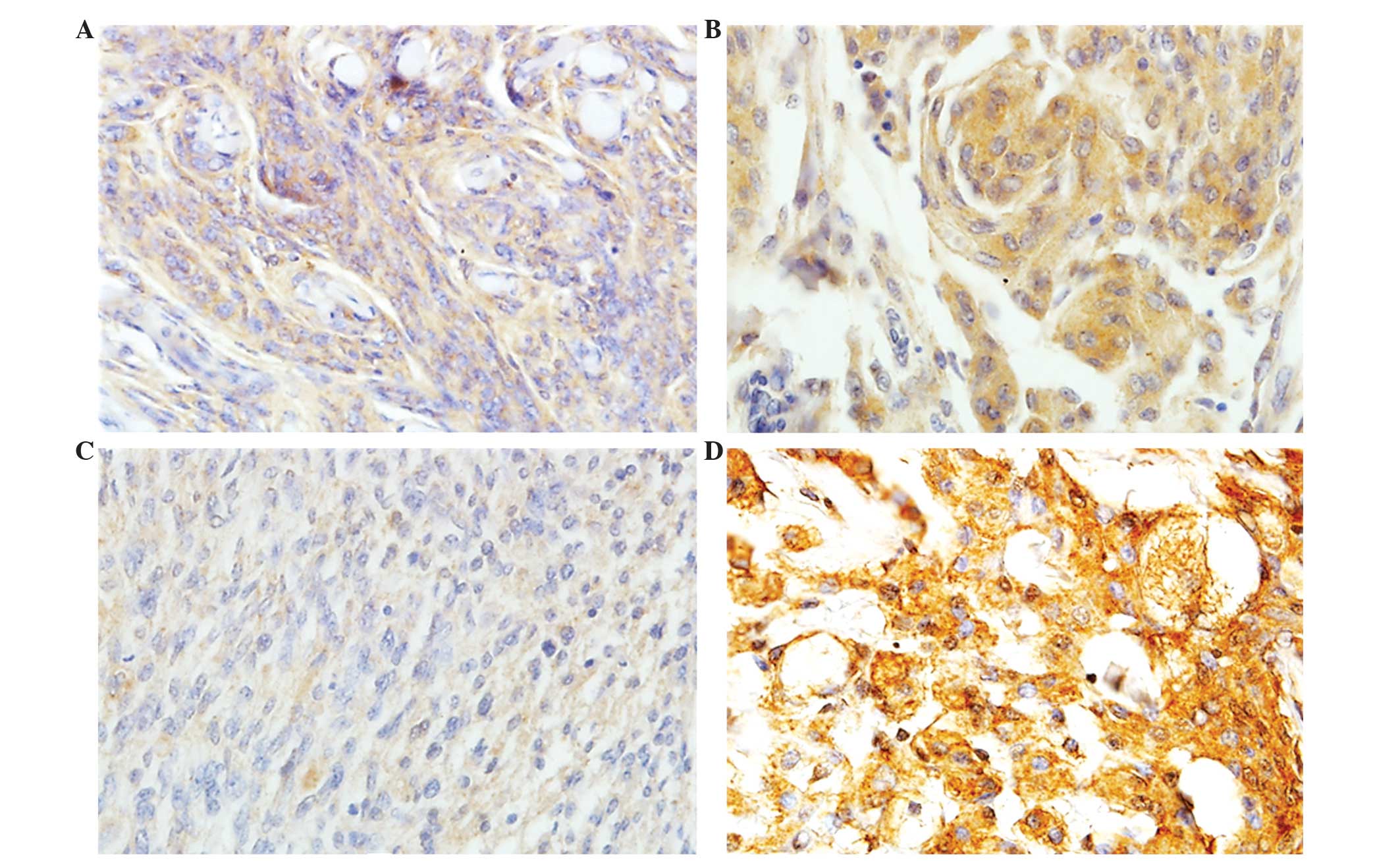Correlation of leptin receptor expression with BMI in differential grades of human meningiomas
- Authors:
- Published online on: February 24, 2016 https://doi.org/10.3892/ol.2016.4272
- Pages: 2515-2519
Metrics:
Total
Views: 0 (Spandidos Publications: | PMC Statistics:
)
Total PDF Downloads: 0 (Spandidos Publications: | PMC Statistics:
)
Abstract
Meningioma is one of the most common primary brain tumor, especially in postmenopausal women. The most important risk factors include radiation, primary head injury or genetic alterations, however it is currently unclear why postmenopausal women are predominantly affected. The aim of the present study was to evaluate leptin receptor (LEPR) expression and body mass index (BMI) in patients with meningiomas of differential grades. Specimens of 158 meningiomas were classified as either G1 (low‑grade meningiomas, n=114) or G2/G3 (high‑grade meningiomas, n=44). Immunohistochemistry was performed to assess LEPR expression. The mean BMIs of the female and male patient groups were 28.43±5.29 and 23.93±4.66, respectively. Mean BMI was significantly higher in the female group, by ~4.50 kg/m2. Patient age significantly correlated with LEPR expression, with the highly positive (++) and positive (+) groups having mean ages of 62.3±12.07 and 52.3±13.04, respectively. A strong positive correlation (r=0.73) was observed between leptin receptor expression and BMI, with the LEPR (++) group having a mean BMI of 30.11±4.49, compared to 22.12±2.48 for the LEPR (+) group. Furthermore, in the low‑grade meningioma group, mean BMI was higher in female patients than male patients (28.13±5.54 and 25.38±4.57, respectively; P=0.01). Additionally, there was strong positive correlation between BMI and leptin receptor expression in the low-grade meningioma group (r=0.69). For the high‑grade meningioma group, mean BMI was 29.49±4.26 and 21.76±3.98 in female and male patients, respectively, and LEPR expression strongly correlated with BMI in this group (r=0.80). The present study demonstrates a correlation between patient BMI, age, and LEPR expression status in low- and high-grade meningiomas. Our results indicate that in addition to endogenous hormones, such as estrogen or progesterone, or fatty tissue‑associated proinflammatory cytokines, LEPR expression status may be a risk factor for meningioma growth and progression.











